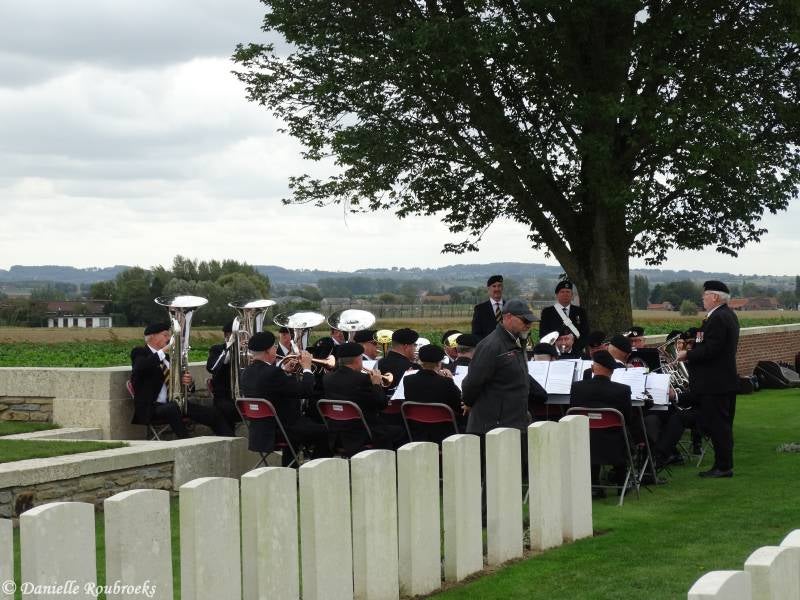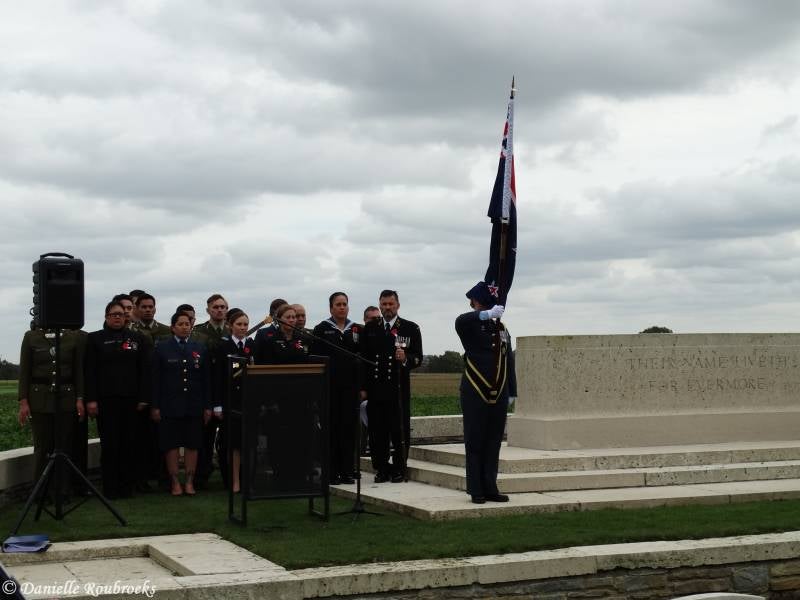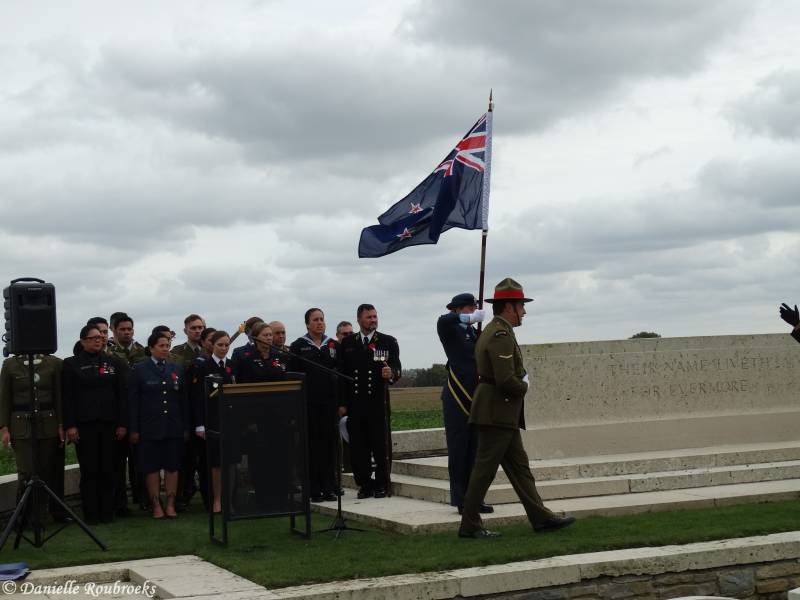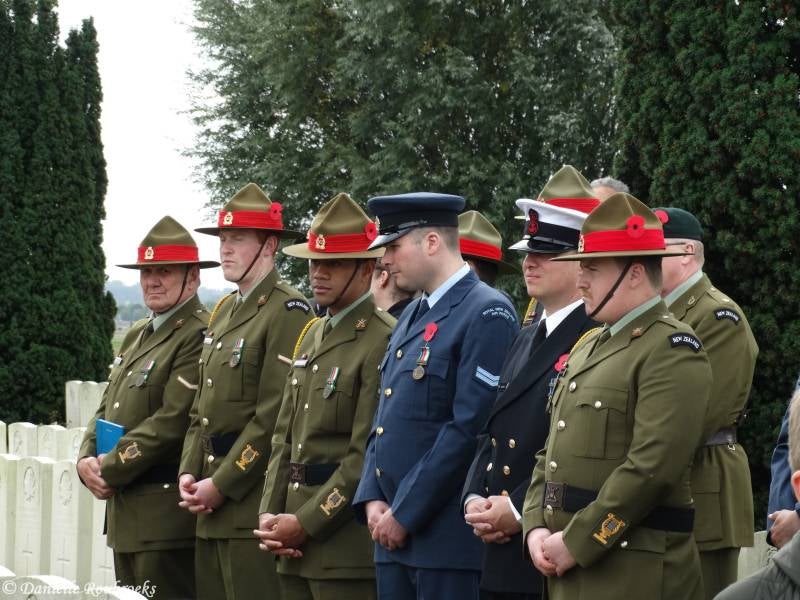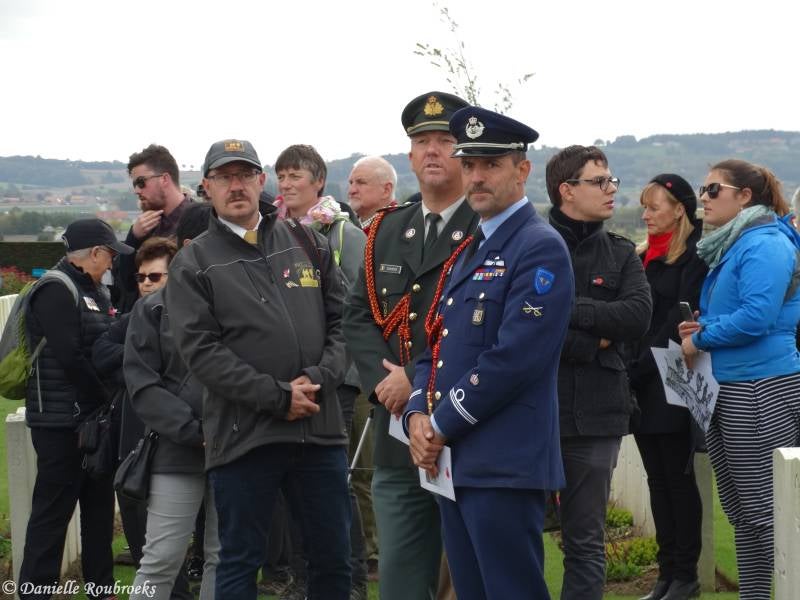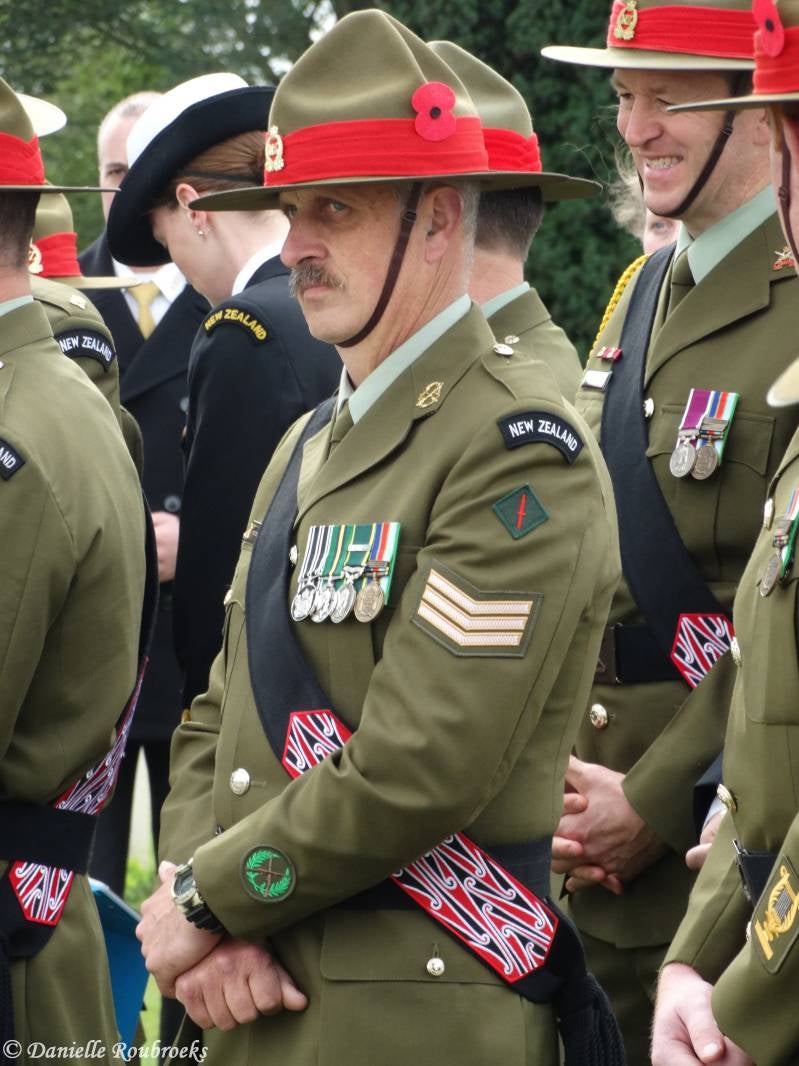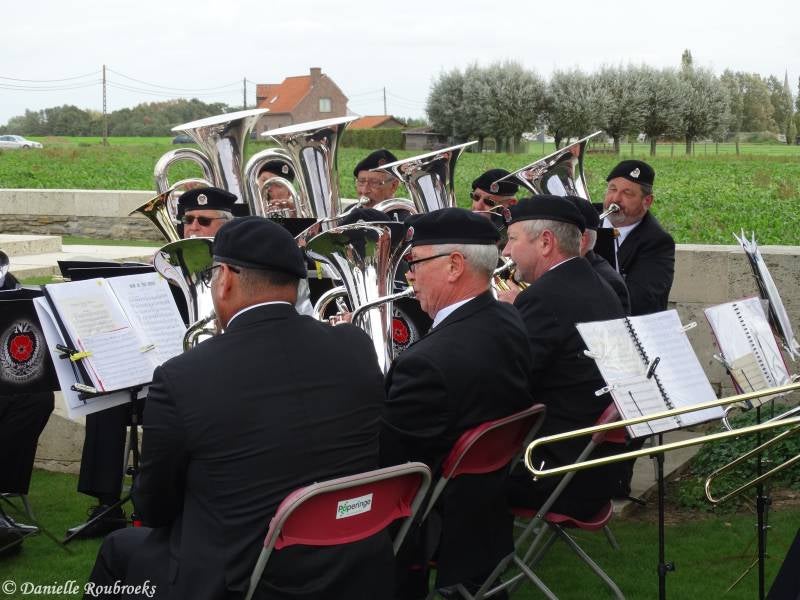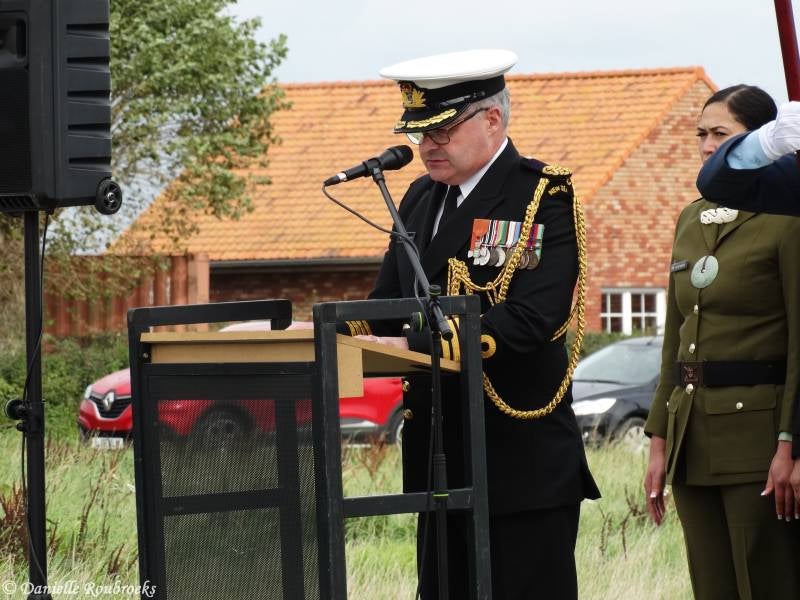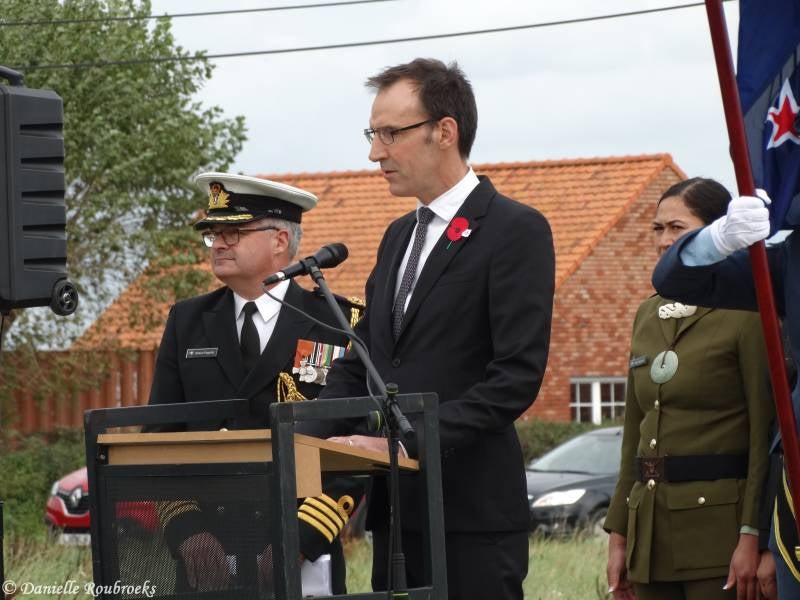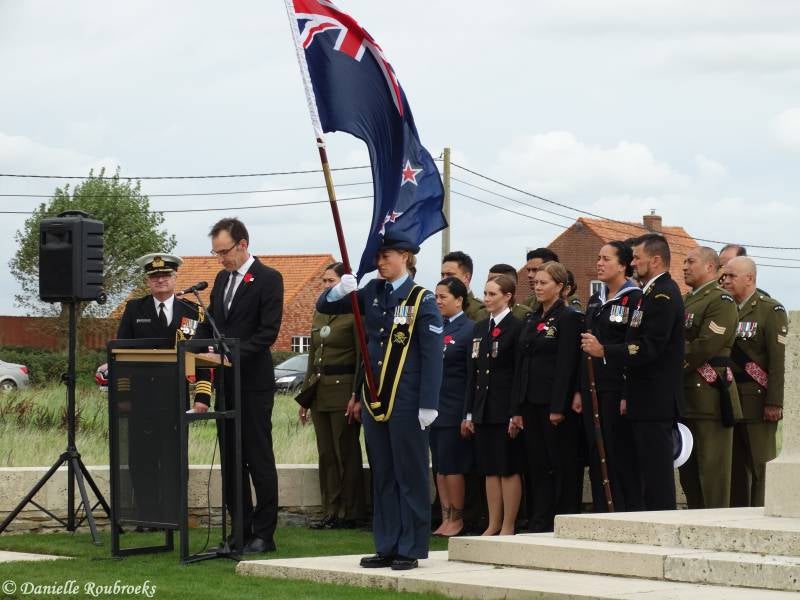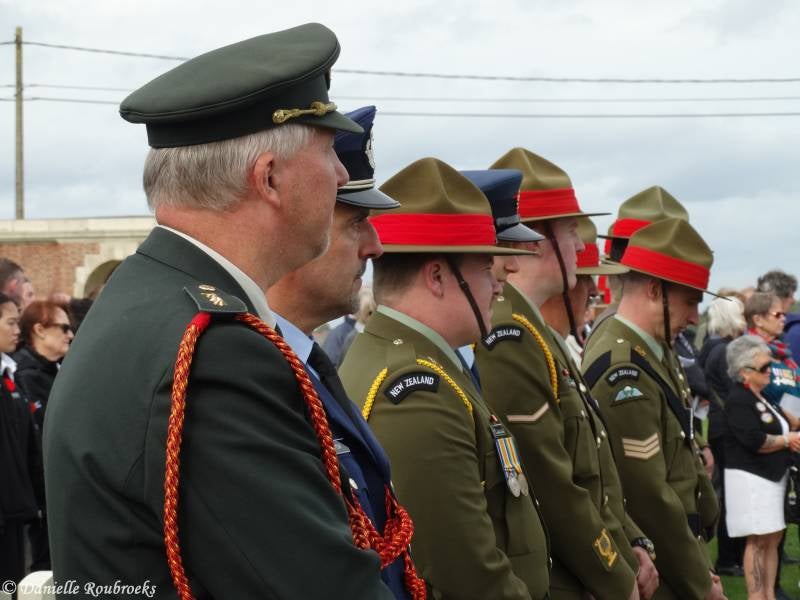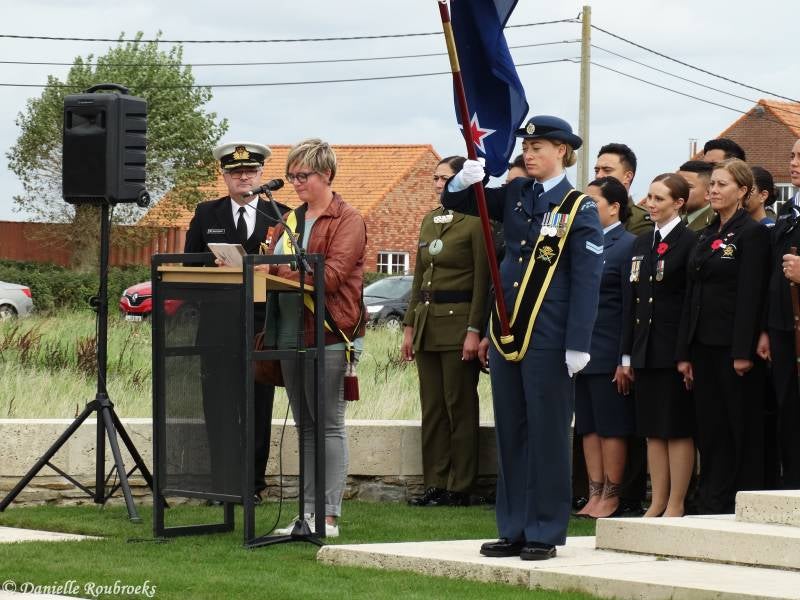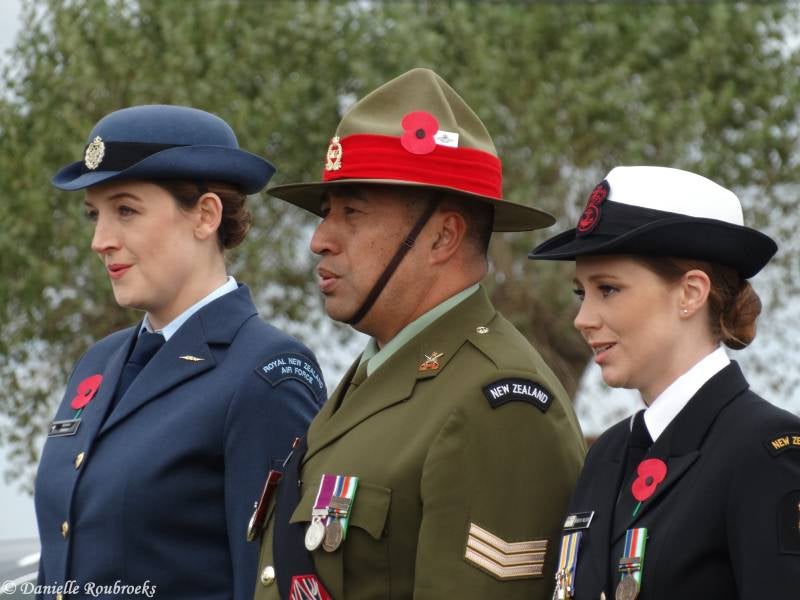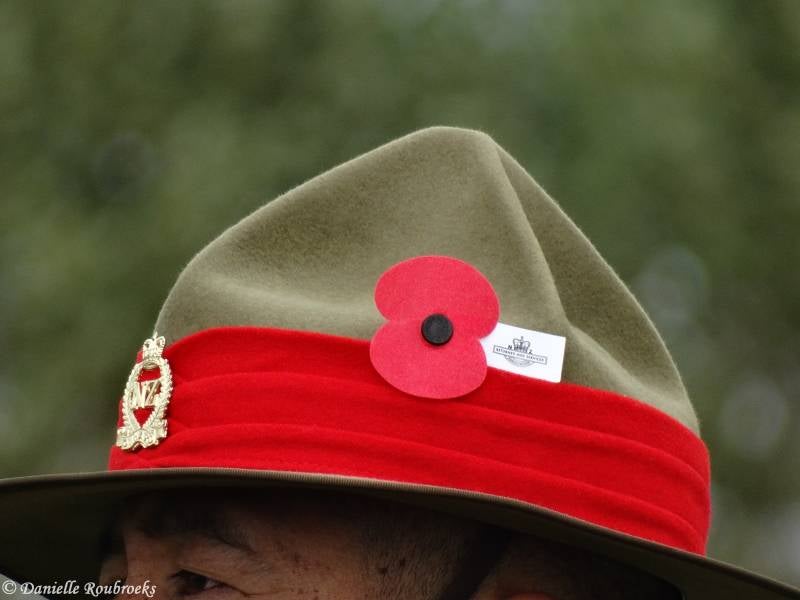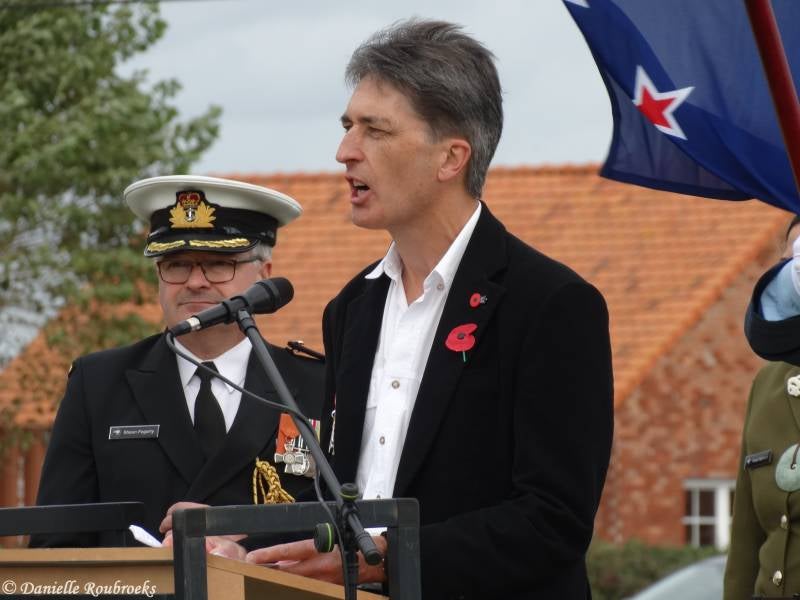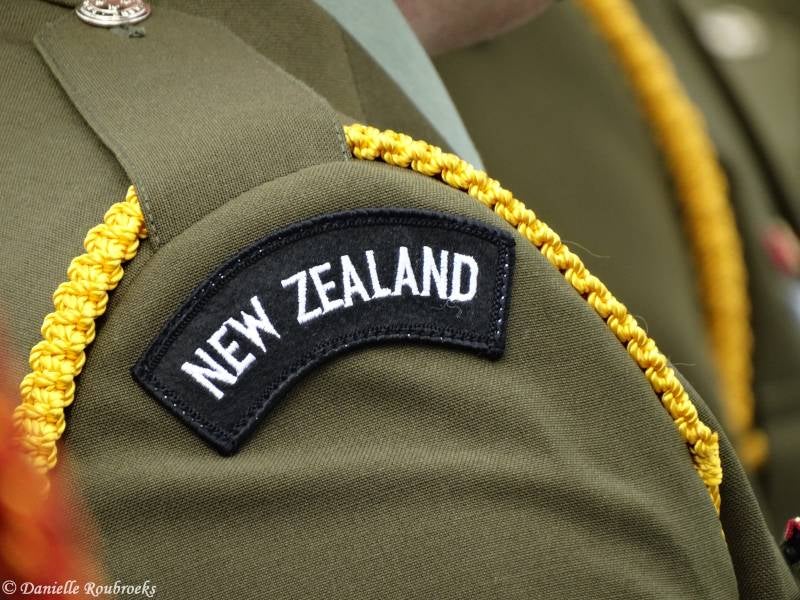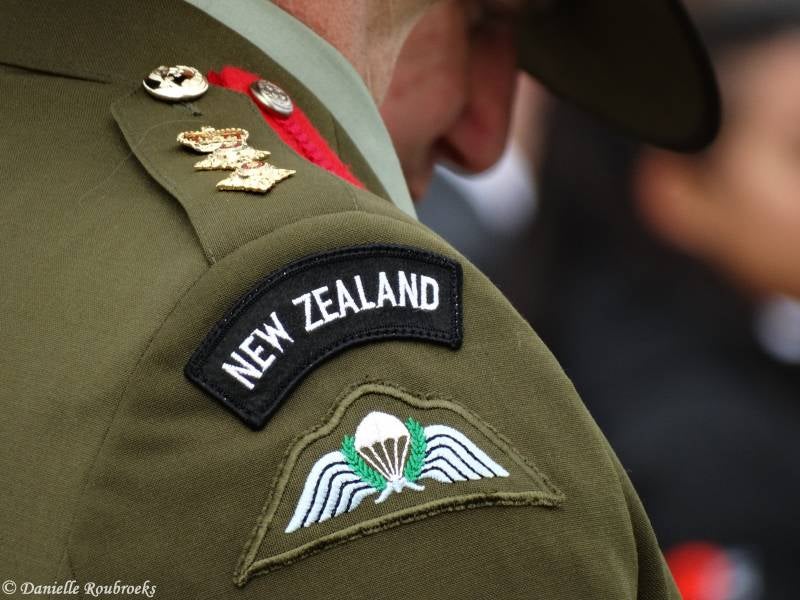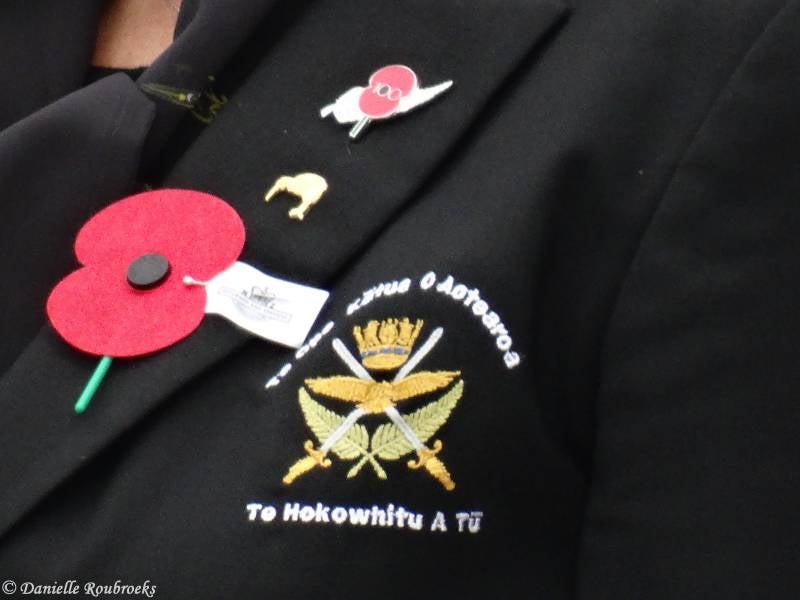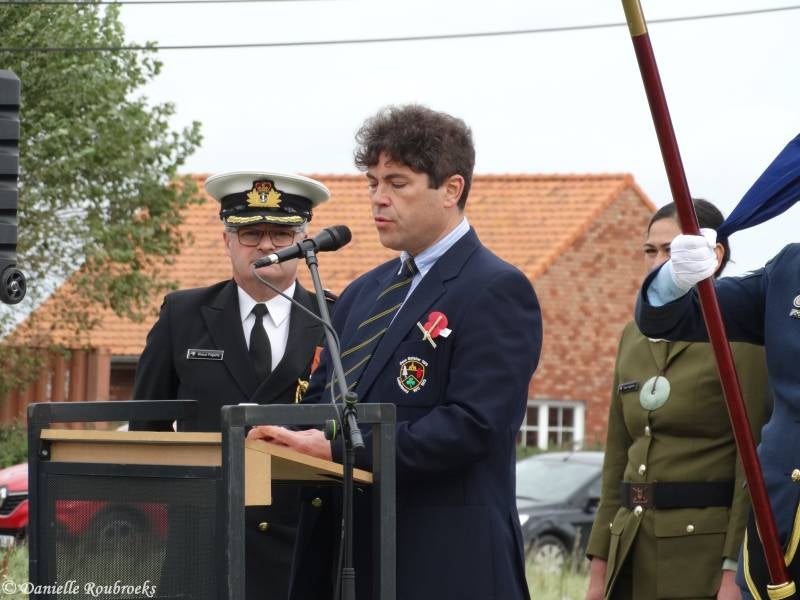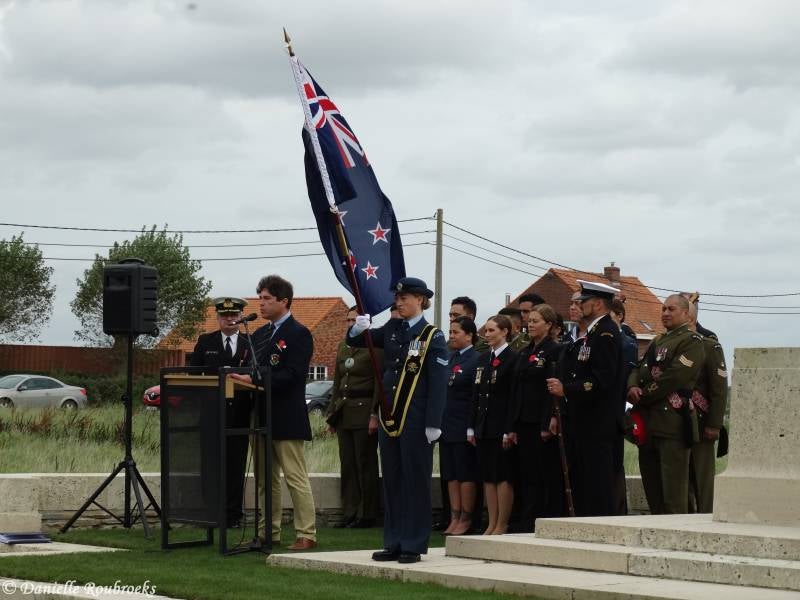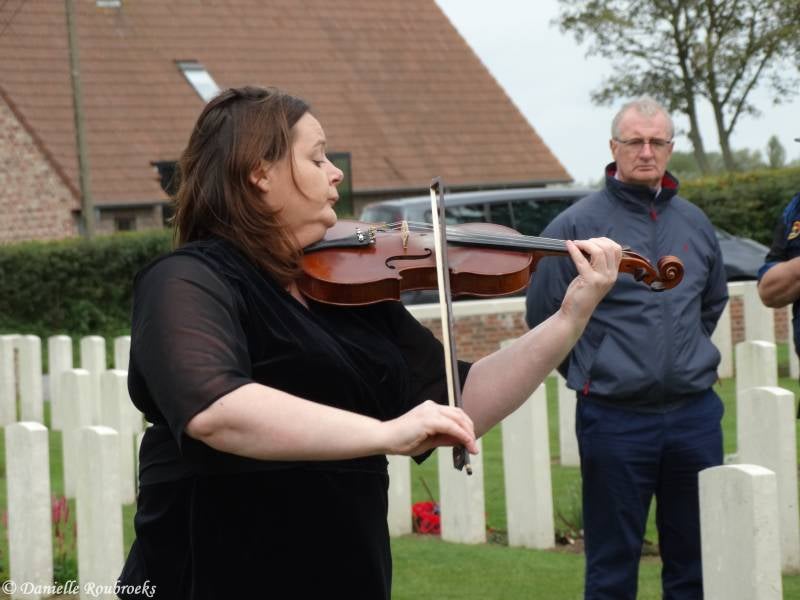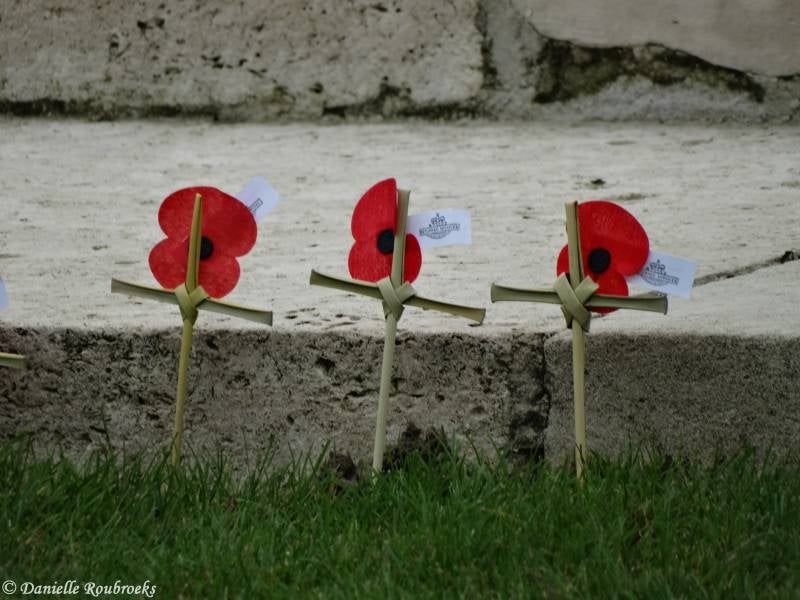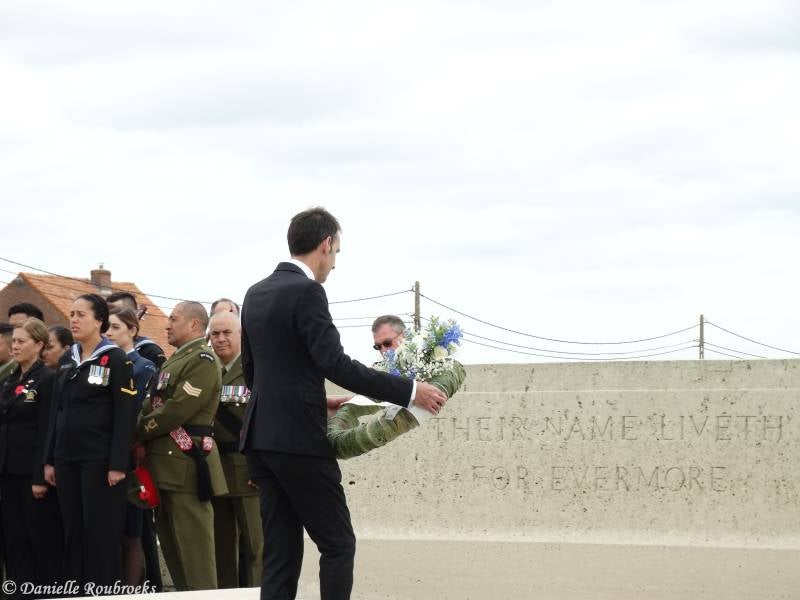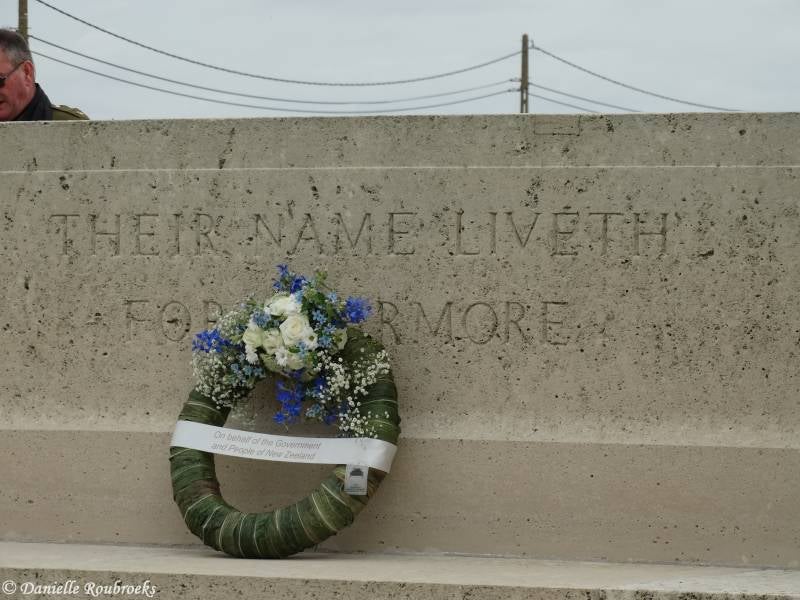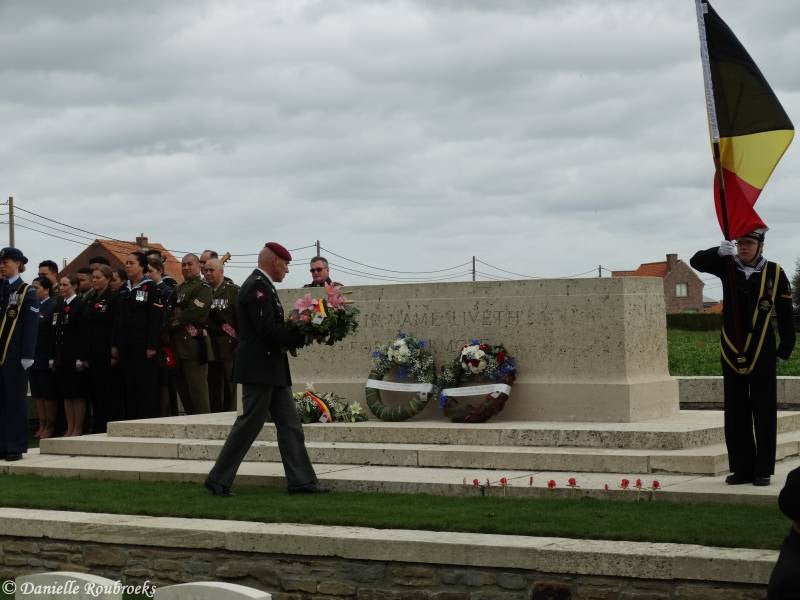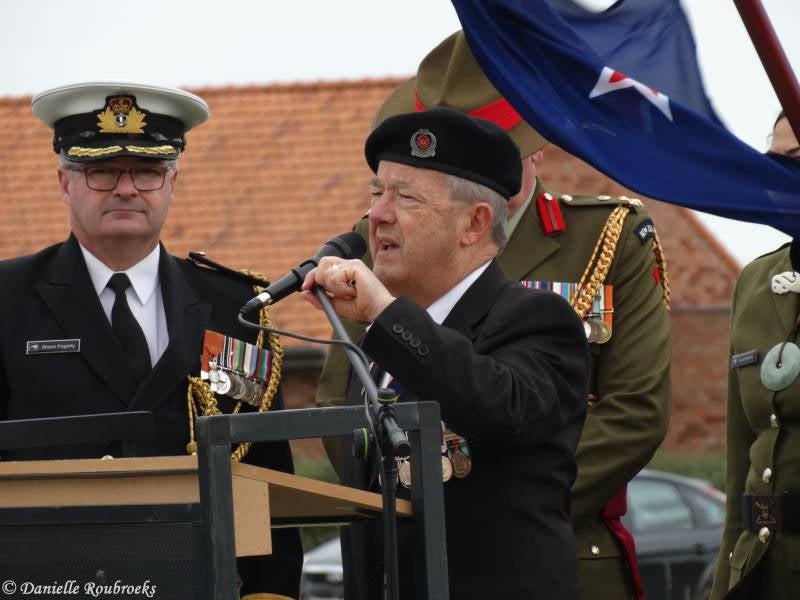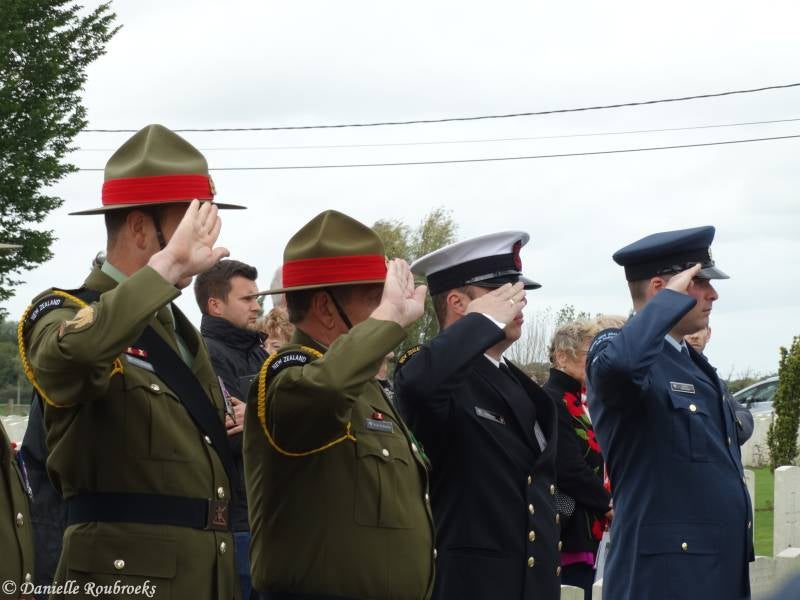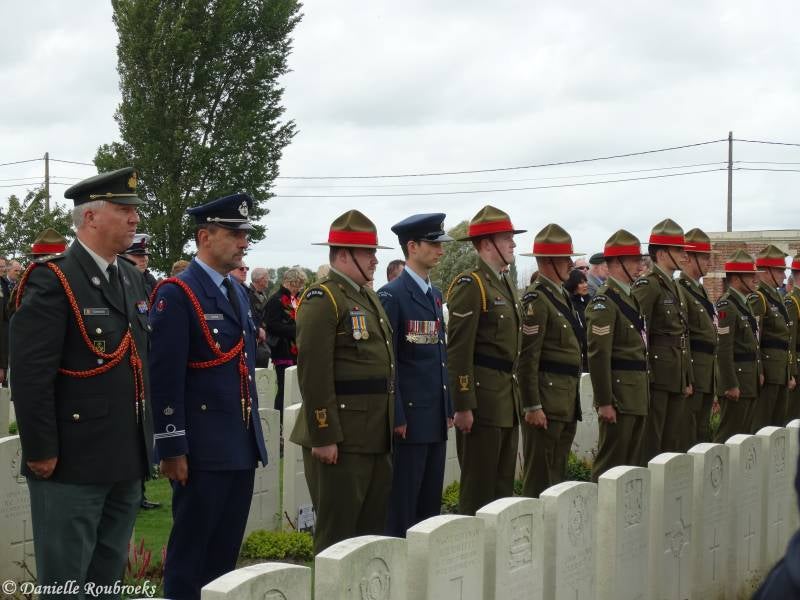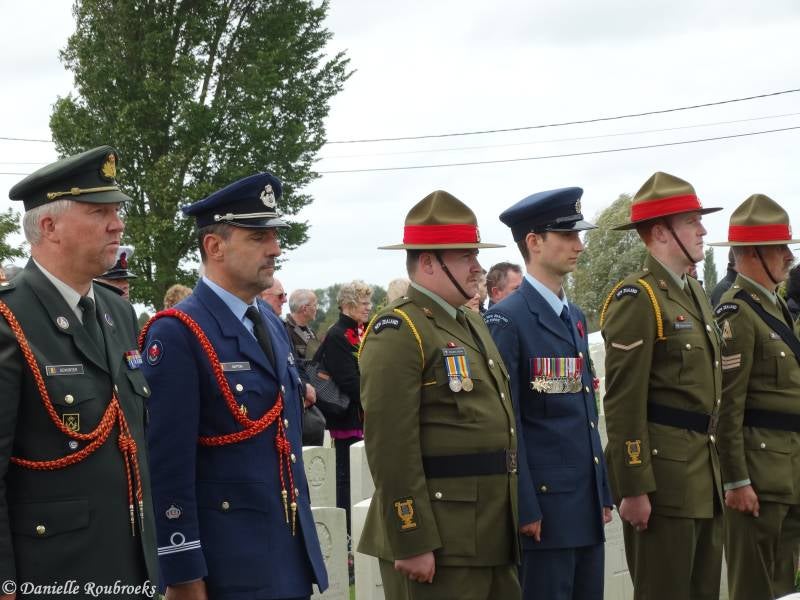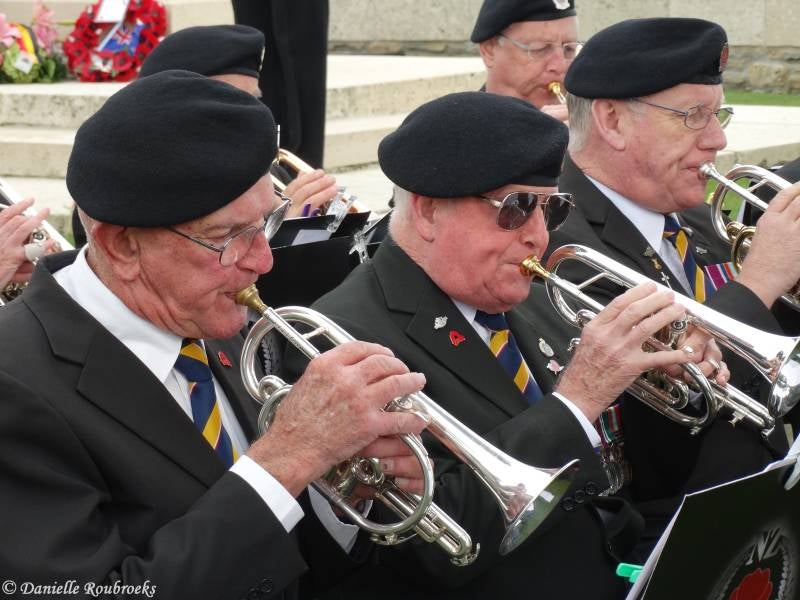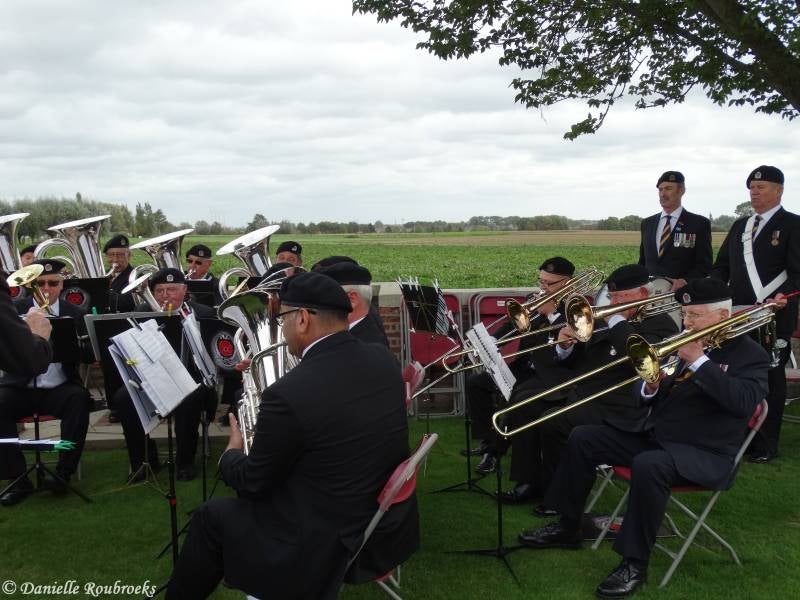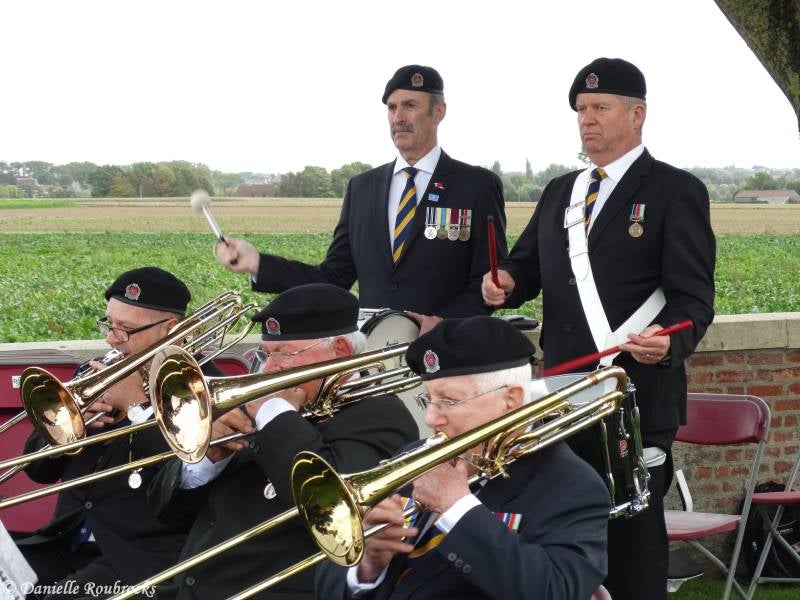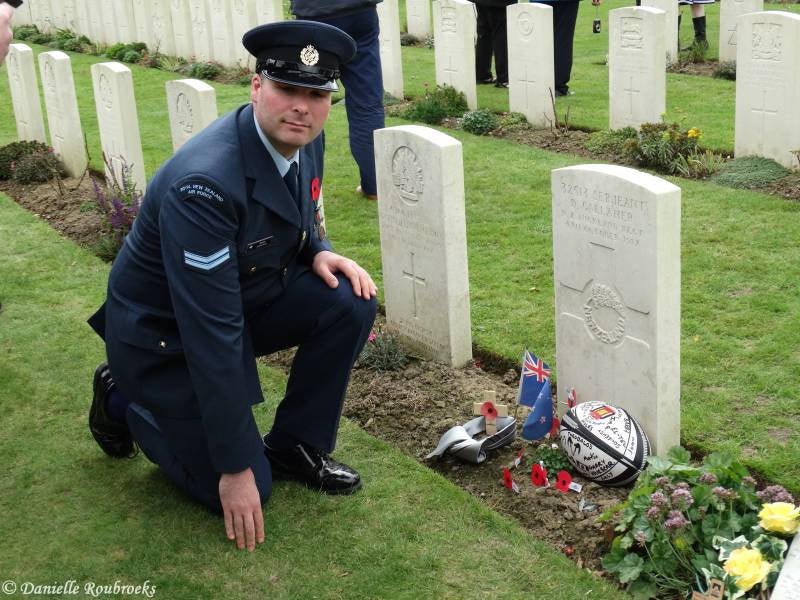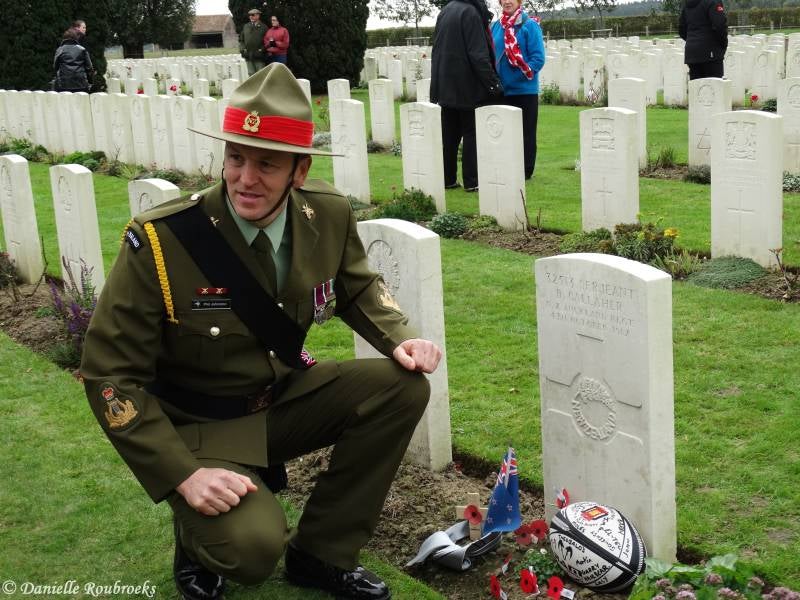Nine Elms British Cemetery, Belgium - New Zealand Ceremony.
Centenary Battle of Broodseinde 4th October 1917
The New Zealand Division won a comprehensive victory and then suffered its single costliest assault in two successive battles in early October 1917.
In late August 1917 General Herbert Plumer was given command of an offensive to capture high ground east of the Belgian town of Ypres using his Second Army (positioned south of the red broken line on the map). Under the command of the Army’s II ANZAC Corps was the New Zealand Division (just above the centre of the map).
The New Zealand Division took part in the Battle of Broodseinde on 4 October 1917, tasked with seizing part of the Broodseinde Ridge called Gravenstafel Spur. On that day the New Zealand soldiers overwhelmed German forward positions, captured 1100 prisoners and helped to extend the front line eastwards, as indicated by the thick purple broken line. This was achieved at a cost of 1700 casualties, including 350 deaths. The British high command mistakenly concluded that the relative ease with which the Broodseinde Ridge had been won meant enemy resistance was faltering. It resolved to make a further push for Passchendaele Ridge on 12 October. However, by this time heavy rain had turned the terrain of Flanders into a muddy bog, rendering artillery support ineffective. New Zealand soldiers advanced up the ridge only to find the enemy’s concrete pillboxes and lines of barbed wire still largely intact. 843 New Zealanders lost their lives in the Battle of Passchendaele, and another 2700 were wounded. This futile attack was the New Zealand Division’s greatest disaster. The survivors of the New Zealand Division were withdrawn over the following weeks and replaced by members of the Canadian Corps. At a cost of 16,000 casualties, the Canadians managed to capture Passchendaele Ridge on 10 November, extending the front line to the thin purple broken line on the map.
The ceremony was attended by a VC recipient:
Bill Henry "Willie" Apiata, VC (born 28 June 1972) is a former corporal in the New Zealand Special Air Service, who became the first recipient of the Victoria Cross for New Zealand. He received the award on 2 July 2007 for bravery under fire during the War in Afghanistan in 2004, in which he carried a gravely wounded comrade across a battlefield, under fire, to safety.
Apiata is the only recipient of the Victoria Cross for New Zealand, as opposed to the Victoria Cross previously awarded.




